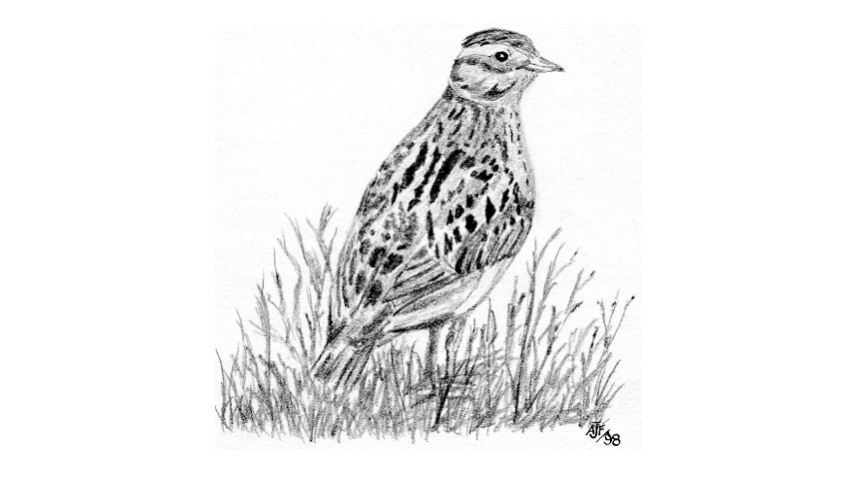Fairly common resident of the agricultural edges of Stevenage, and passage migrant.
Nationally the Skylark population has declined by as much as 50% since 1980. This decline is believed to be as a result of more autumn grown cereals, which reduces the availability of stubble, an important food source in winter. Skylarks have suffered declines before, in the 1950s they suffered massive mortality as a result of the use of organochlorine pesticides, and the effects of the 1962/63 winter also reduced their numbers.
Prior to the Second World War, Skylarks used to be seen and, nested at the Walkern Road Allotments (now the site of Fresson Road), and in the late 1940s they could also be found in the fields that are now the site of Angotts Mead and Woolenwick School.
In 1973 there were 14 pairs in Fairlands Valley, and five pairs nested in the fields of the then new St. Nicholas Park, but shortly after two nests hatched, the fields were cut.
The 1973 Breeding Atlas confirmed breeding from four of Stevenage’s tetrads, the 1992 Atlas from six and, the 2012 Atlas from two, those covering Chesfield Park and, Chells Manor.
The 2012 Winter Atlas confirmed their presence from nine of the tetrads covering Stevenage.
Between mid-October to November westward to north westward passage of migrating Skylarks is observed annually in Hertfordshire, over 70 were seen in two hours passing north westward over Box Wood on 4 October 1980 and, 200 were seen near Stevenage on 23 October 2011. Large movements also occur with the onset of cold, weather, these tend to follow a south westerly direction. On 20 January 1985 250 were seen near Aston End, and 150 at Norton Green on 1 January 1997.
Other recorded flocks: 30 to 40 Hertford Road December 1972; 20 Hertford Road area 31 December 1973; 10 Fairlands Valley in 1979; 25 Norton Green Tip 13 June 1983; 12 Norton Green Tip 9 February 2008; 100 Aston between January and March 2009; 10 Norton Green Tip 11 October 2011; 60 Norton Green Tip 19 January 2012; c.60 seen in fog at Potters Spring 16 November 2012; 20 Norton Green Tip 10 March 2015.
14 pairs were recorded from Fairlands Valley in 1973.

